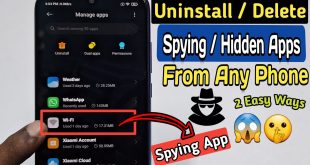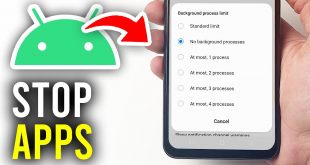Unleash the power of your Android device by effortlessly transferring and installing applications directly from your PC. This comprehensive guide delves into the intricacies of utilizing the Android Debug Bridge (ADB), a versatile tool that empowers you to bridge the gap between your computer and your Android companion, opening up a world of possibilities.
ADB grants you unparalleled access to your device’s inner workings, allowing you to perform a wide range of tasks, including deploying applications. This guide will meticulously guide you through the intricacies of this process, empowering you to seamlessly transfer and install any application of your choice from the comfort of your PC, regardless of its availability on the Google Play Store.
Deploy APK on Android from PC via ADB
Table of Contents
This section provides a step-by-step guide to effectively deploy an Android APK package onto your Android device using the Android Debug Bridge (ADB). ADB serves as a communication channel between your PC and Android device, facilitating various interactions such as package installation, debugging, and more.
Requirements for ADB
To implement ADB effectively, specific prerequisites must be met to establish a seamless connection between your PC and Android device. This section outlines the essential requirements you need to fulfill before embarking on the ADB installation process. By ensuring these prerequisites are in place, you can streamline the ADB experience and unlock its full potential.
The following requirements are essential for successful ADB implementation:
- **ADB binary:** Download and install the Android Debug Bridge (ADB) binary from the Android SDK Platform Tools package.
- **USB cable:** Utilize a high-quality USB cable to establish a stable connection between your PC and Android device.
- **Android SDK Platform Tools:** Ensure you have the latest Android SDK Platform Tools installed on your PC.
- **ADB driver:** Install the appropriate ADB driver for your specific Android device to facilitate communication.
- **Device with USB debugging enabled:** Activate USB debugging mode on your Android device to grant ADB access.
Connect Android Device to PC
Establishing a connection between your Android device and PC is an essential prerequisite for performing various tasks, such as installing applications, transferring files, and debugging. This section provides a comprehensive guide to connect your Android device to your PC via USB cable, Wi-Fi, and Bluetooth.
Enable ADB Permissions on Device
Before connecting your Android device to your PC for APK installation using ADB, it’s crucial to enable ADB permissions on your device. This grants your computer access to perform various commands on your phone, including installing applications.
Follow these steps to activate ADB permissions:
| Step 1: Enable Developer Options | Navigate to “Settings” > “About Phone/Tablet” and tap “Build Number” several times until you see a message indicating “Developer options enabled.” |
| Step 2: Open Developer Options | Return to the “Settings” menu and select “Developer Options.” |
| Step 3: Enable USB Debugging | Scroll down to find the “USB debugging” option and toggle it to the “On” position. |
| Step 4: Grant ADB Access | Connect your device to your computer via a USB cable and unlock your screen. A pop-up window should appear on your device asking for permission to grant ADB access. Tap “Allow” to proceed. |
Once you have completed these steps, ADB permissions will be enabled on your device, allowing you to proceed with APK installation.
Find APK Path on PC
Accurately locating the APK file on your computer is crucial for successful installation via ADB. This section provides a comprehensive guide on retrieving the precise path of the file, ensuring a seamless process.
Before proceeding, ensure that you have downloaded the APK file to your computer and saved it in an accessible location. The specific path may vary depending on your operating system, file explorer, and personal preferences.
Tip: For ease of access, consider creating a dedicated folder specifically for APK files. This will streamline the process and prevent any confusion or delays during the installation.
Install APK via ADB
This section delves into the step-by-step process of installing an APK package on an Android device utilizing the Android Debug Bridge (ADB) interface. We’ll guide you through the initial setup, file transfer, and execution of the installation command, ensuring a seamless and efficient APK deployment.
Questions & Answers
What is ADB and how do I use it?
ADB (Android Debug Bridge) is a versatile command-line tool that allows you to communicate with your Android device from a computer. It’s typically used for debugging purposes but can also be employed for installing and managing APKs. To use ADB, you’ll need to enable USB debugging on your device and install the Android SDK on your computer.
I can’t seem to connect my Android device to my PC via USB. What could be the issue?
There could be several reasons why your device isn’t connecting properly. Ensure that you’re using an original USB cable, as third-party cables may not be reliable. Additionally, check if the USB port on your computer is functioning correctly by trying a different port or connecting a different device. If the issue persists, try restarting both your device and computer.
I’m getting an “insufficient permissions” error when trying to install the APK. How can I fix it?
This error usually occurs when you don’t have sufficient privileges on your device to install the APK. Make sure you’re using an account with administrative privileges or enable the “Unknown Sources” option in your device’s security settings. This will allow you to install APKs from sources other than the Google Play Store.
Can I use ADB to install APKs on multiple devices simultaneously?
Yes, ADB allows you to connect to and manage multiple devices at once. To do this, use the “-s” flag followed by the device’s serial number when executing ADB commands. Alternatively, you can use the “adb devices” command to view a list of connected devices and select the ones you want to install the APK on.
Is it possible to install an APK on an Android device without using ADB?
While ADB is the most common method for installing APKs from a PC, there are alternative ways to do it. You can use Android File Transfer (for Mac users) or Windows File Explorer (for Windows users) to manually transfer the APK file to your device and install it through the package installer.
 New mods for android everyday
New mods for android everyday



